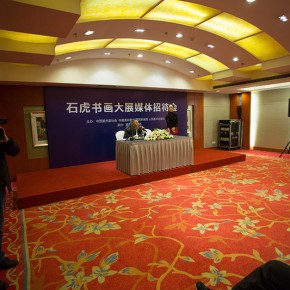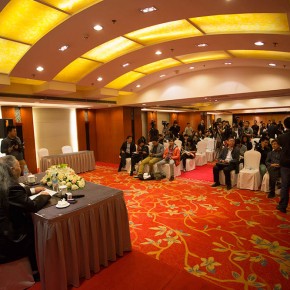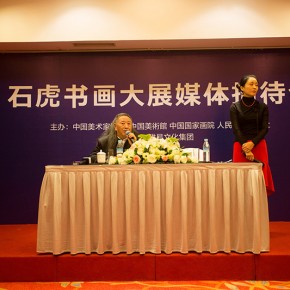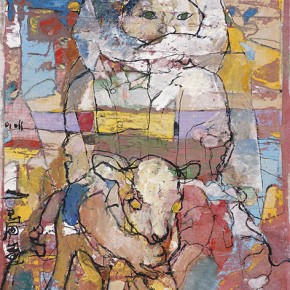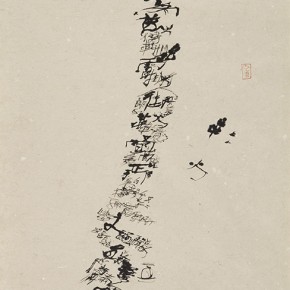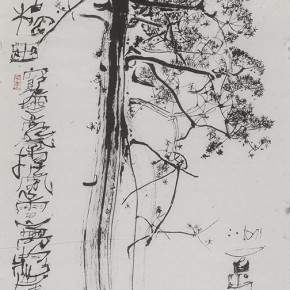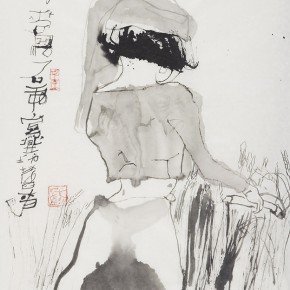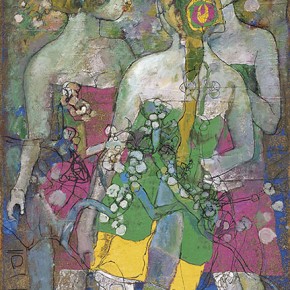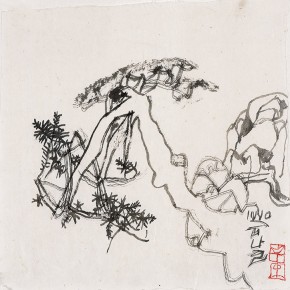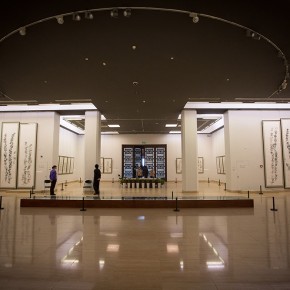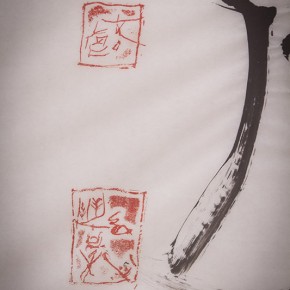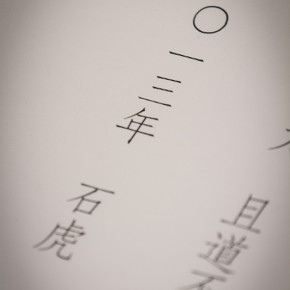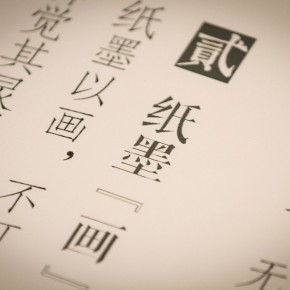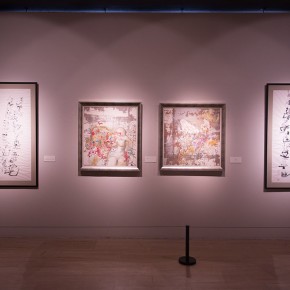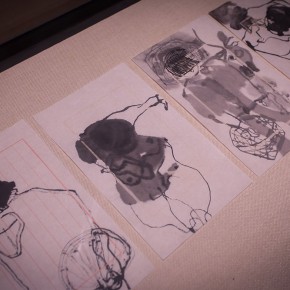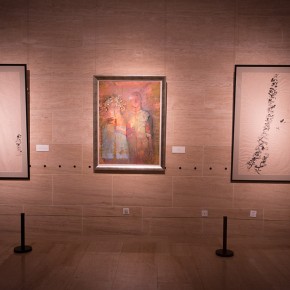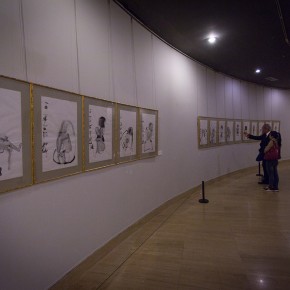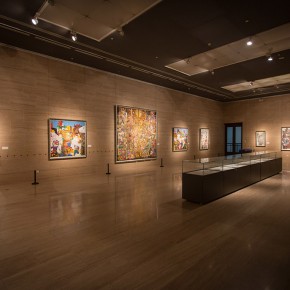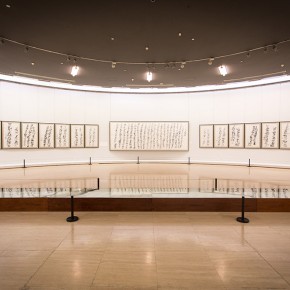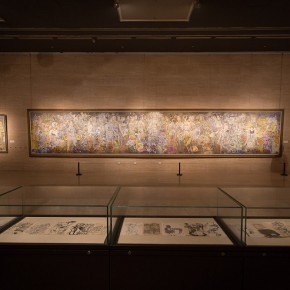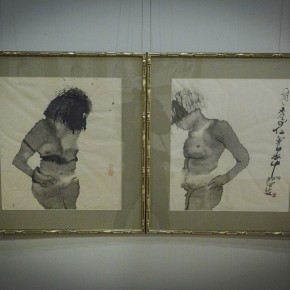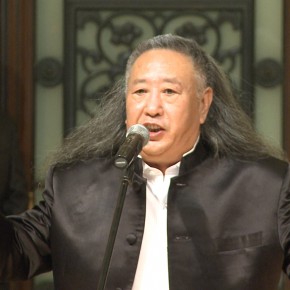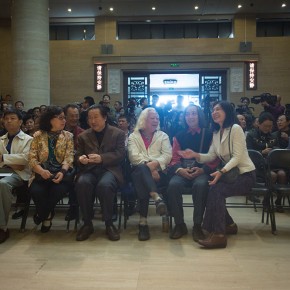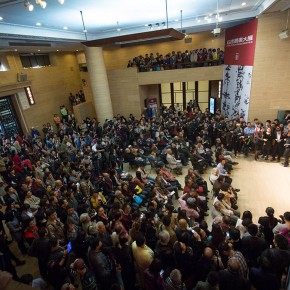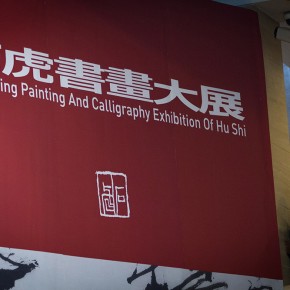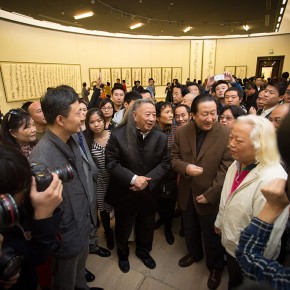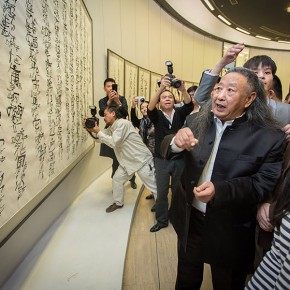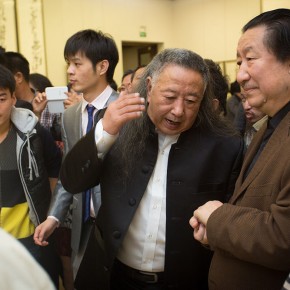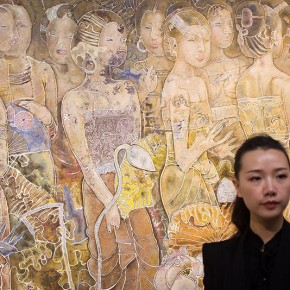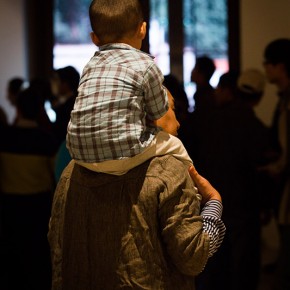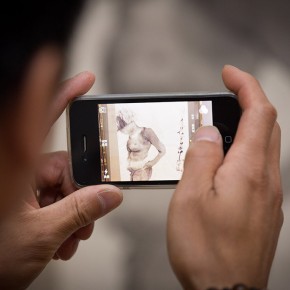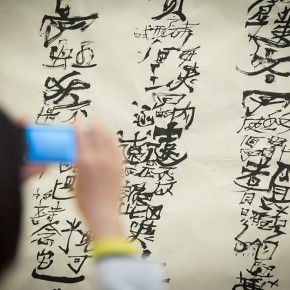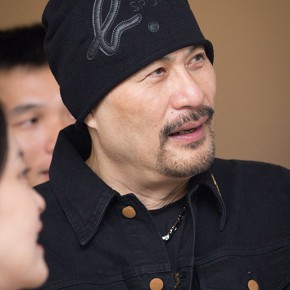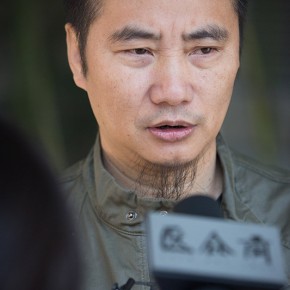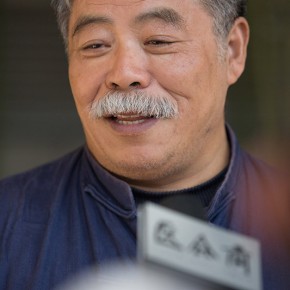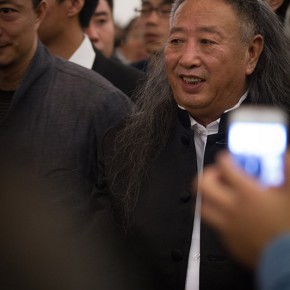
Jointly hosted by China Artists Association, National Art Museum of China, China National Academy of Painting, People's Fine Arts Publishing House, etc., organized by Artron Culture Group, “Beijing Exhibition of Chinese Painting and Calligraphy by Shi Hu” grandly opened at National Art Museum of China at 10:00 am on October 11, 2013.
It is one of the most important exhibitions for Shi Hu after years of “l(fā)iving in solitude”. The exhibition is divided into several parts including?calligraphy, ink?painting of nudes, ink painting of landscape, and heavy-color painting, comprehensively showing the academic exploration and artistic achievements of the artist in recent years. Since the 1980s, Hu Shi has been affecting the contemporary art circle by “exploration”, and he is one of the most creative artists and poets, full of legendary thoughts and highly controversial. Therefore, he dares to constantly exceed himself, wandering in the fugue of the West and South, in addition to seeking the creative possibilities as a contemporary artist in the present surviving state, from the intrinsic character of the literati painting and folk artworks, he brings the audience a new visual experience, sharing an in-depth cultural thinking and outlook together with the artist.
Shi Hu’s heavy-color paintings review the philosophy revealed by the Western cubism, abstract, and post-modernism paintings from the position of Oriental aesthetics, thus he truly reveals the profound meaning of local culture, expressing the pure writing rhythm with the use of complicated and uninhibited lines; pursuit of simple aesthetic orientation through gorgeous and dignified changing colors, leading people into a distant world which is full of the mysticism of color between the clear and absentminded. The artist has no longer been entangled in the superficial thinking of “the combination of the West and East”. We could touch the mysterious and amiable section produced by the collision of the Western and Eastern cultures behind the visual expression of the works, filled with the romanticism and idealism which has been missing for a long time in the contemporary art painting, and he has always guarded the plain local complex, blending art and life by the use of the innocence of a poet and the fantasy of his childhood, “to reveal the cultural connotation in a dream-like language”. (Written by Shao Dazhen)
It is a beautiful part of Shi’s art world that the ink paintings of nudes and landscape, where the hearty ink rhyme, quaint ethereal lines, vividly expresses the hazy beauty of the images. Shi’s calligraphy is to pursue the “Heavenly consciousness”, in addition, through re-examination and the artistic creation of the characters, and use of the aesthetic of traditional Chinese calligraphy to express the beauty beyond the images with the deductive of a brush, line and ink so they rhyme as much as possible, by the direct, distant and secluded aesthetic concept, he puts the versions of steles in Wei and Jin Six Dynasties and the simple annotation of Chinese characters by folk art into a new life carrier, his calligraphy is through the process of “writing” and visual presence to explore the inherent relationship between Chinese calligraphy art and character, introducing “calligraphy” into a sublimity to most likely reveal the beauty and mystery of the character, which is undoubtedly the value of Shi Hu’s art that transcends the contemporary “minimum character style” and the so-called “modern calligraphy”.
It’s undoubtedly the reason that his exploration is of a challenging and controversial nature, which makes his works historic, presenting an enthralling “Xintianyou/ a kind of Shanxi melody” to the pessimistic Chinese calligraphy circle… perhaps, it’s the most important appearance for the calligraphy of the artist.
The exhibition is at present in Hall 1, 2, 3, 8, 9 at National Art Museum of China, going through to October 29, 2013.
Photo: Hu Zhiheng, translated by Chen Peihua and edited by Sue/CAFA ART INFO


